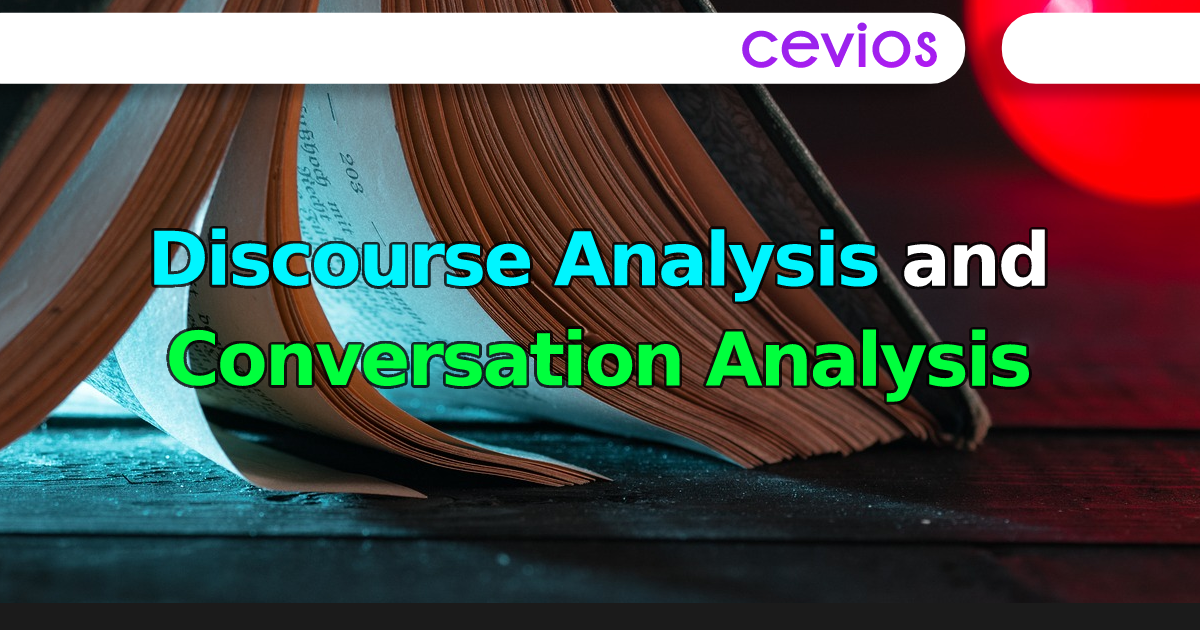Discourse Analysis and Conversation Analysis
An example of an eclectic Discourse Analysis
I want to turn for my last example to a discourse analysis inspired – if distantly – by ethnomethodology. If ethnomethodology has a place in a survey such as this one, it is an uncomfortable one at best. Most practitioners of ethnomethodology would not describe themselves as doing discourse analysis. Their aim – as the term ‘ethno-methodology’ suggests – is to explicate the reasoning practices or rules that ordinary people display in prosecuting their ordinary lives. While some of those practices are made visible in their use of language, many others are embodied in the props and resources which furnish the daily scene; in the temporal organisation of people’s comings and goings; in the artefacts and documents available for people to consult or refer to; and in the affordances of the physical sites they live and work in. Thus if one wanted to find out how people solve the problem of (say) taking turns to be served (Garfinkel, 2002 ch 8), one would not limit oneself to analysing people’s language, but would analyse the ebb and flow of bodily movement, synchronised occupation of space, gestures, gaze and so on, to see how queues form and are oriented to and policed. Much more than language needs to be mastered by the person who wants competently to join a line for service – as many of us who have tried the experience in unfamiliar places, perhaps when in foreign lands, can testify.
Nevertheless, ethnomethodology has inspired a kind of discourse analysis which, while wanting to explicate people’s public reasoning processes, privileges talk in its ethnographic setting. Perhaps the best label for such work is ‘eclectic’, since it combines the four canonical principle of discourse analysis with a concern for the physical and temporal location in which the event takes place. For an example of such work, I have chosen a much-anthologised study by Hugh Mehan (1996) on how children are sorted into various categories by educators. This picks up the theme of identities in the section on CA above, and shows how an eclectic discourse analyst can use non-talk elements of the scene.
Mehan follows the career of one nine-year old boy (“Shane”). Our first sight of him is when a teacher spots him behaving in a way that concerns her. He then becomes a case for the educational psychologist, who tests him, and the language in which he is described changes from the teacher’s common-sensical, teacherly talk (“he’s very apprehensive about approaching anything…” ..”whenever he’s given some new task to do it’s always like, too hard, ‘no way I can finish it'”) to technical, quantitative norm-based terms (“he was given the WISC-R and his IQ was slightly lower, full scale of 93…”).
Mehan’s set-piece for analysis is a recording of a subsequent meeting of educators (teachers, educational psychologists and so on) and parents. At this point Shane’s fate, as is that of a list of children who have to come to the school’s attention as possibly needing special education, is to be decided. Each case will be decided by talk; and as the outcomes are quite dramatically different (the child might be classified then and there as “learning disabled” and sent to one kind of school, or as “educationally handicapped” and sent to another), the power of discourse is all too visible.
It is up to the Board to hear the various descriptions of Shane available from his teacher, his parents, the school nurse and the psychologist, and meld them into a decision as to just what kind of schoolboy he is. Mehan describes the props (for example, the psychologist’s thick bundle of forms, test scores and reports) or the lack of them (the child’s mother has no notes) as part of the action. The props round out his observations about the talk: that, for example, the psychologist refers to her official notes while delivering her account uninterrupted, while the mother’s unsupported account is drawn out by others’ questioning; or that the psychologists’ document-based story, although freighted with obscure jargon, is not challenged, whereas the mother is asked to explain what she means by her common-sense claims about her son’s behaviour (claims that would pass unremarked in a more mundane setting; for example, that “lots of times he comes home and he’ll write or draw”). Mehan ‘adds value’ of a startling kind when he claims that
Mehan’s point is that the technicality of psychologist’s claims meant that they could not easily be challenged, so her conclusions were never subject to the sort of test that the mother’s or the teacher’s could be. Because of its permitted obscurity, it is the psychologist’s report that carries the day, and Shane is classified as having a learning disability; he has been set on a career which may have profound consequences (for good or ill). Mehan has not simply noted that different sorts of evidence have been brought forward to reach this decision; by careful note of how descriptions are phrased and received he has offered us the analysis that (as he puts it) “these modes of representation are not equal” (p 356). It is a discourse analysis that delivers the generic promise not merely of describing talk but of explaining social action, and adds specific ethnomethodological value by charting participants’ treatment of each other and the distributions of powers and expertise that they allow themselves.

